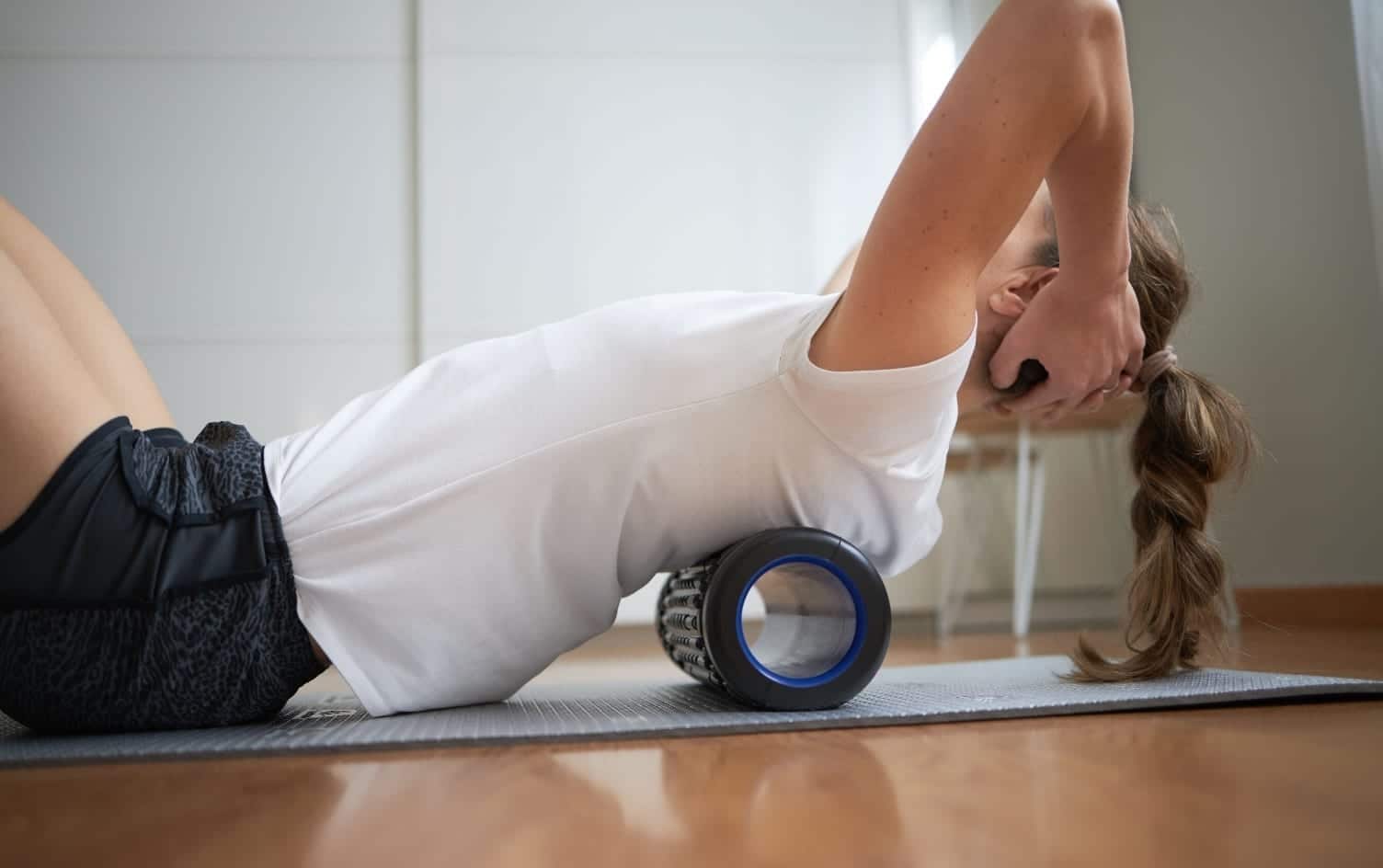There are numerous tools and strategies geared toward improving exercise recovery, including ice, compression, massage, Epsom salt baths, and the latest trend of “percussive therapy” that involves a device delivering tiny, rapid punches to your muscles. One of most popular, and affordable, choices in this category of post-workout tools is the humble foam roller.
Available in a range of options, these are often used after a workout, under the theory that putting your body weight onto the roller helps release the buildup of lactic acid that exercise creates — and, subsequently, it lowers the prevalence of delayed onset muscle soreness, allowing you to exercise again with less pain.
However, there doesn’t seem to be compelling evidence to back up this theory — and recent research suggests any decrease in pain or improved muscle recovery may actually be a placebo effect.
But, don’t abandon that roller yet; there are ways to use it effectively — you just need to switch up when you’re using it.
In research done at California State University (due to be published later this year), eight participants — five men, three women — between the ages of 18–35 completed two acute resistance exercise bouts, doing 10 sets of 10 repetitions of barbell back squats performed at 60% of their one-rep max. The bouts were separated by at least seven days.
Following the first one, they foam rolled for 5 minutes, focusing on hamstrings, quadriceps, calves and gluteus maximus muscles. They didn’t do foam rolling after the second round, but did have measurements done to ensure there was exercise-induced muscle damage (EIMD).
The result was no significant difference between the foam rolling after EIMD and the non-rolling after the second bout of high-volume resistance training.
There are study limitations to consider, particularly the small number of participants and short timeframe, explained Evan Schick, PhD, professor of kinesiology at California State University. Also, researchers didn’t measure the amount of pressure being put on the roller. Schick says some may have been “going light” in more painful spots, for example. But the results add to existing research about whether this type of strategy is useful immediately after exercise when done for a short amount of time, he says.
READ MORE > 5 WAYS TO USE A FOAM ROLLER THAT DON’T INVOLVE ROLLING
“We’re not seeing much compelling evidence that foam rolling after exercise is enough to have an effect on the damage that’s created when you do resistance training,” he says. “That doesn’t mean it should be abandoned, though. More likely, you may need to play around with rolling at a slower pace or doing it for longer. It’s just rolling for five minutes quickly after your workout that seems to be non-effective.’
Although the study’s conclusion is that post-exercise foam rolling may not be ideal for addressing EIMD, there may be benefits when rolling is done before a workout as part of a warmup, according to Diana Garrett, DPT, a physical therapist and outpatient rehabilitation supervisor at Providence Saint John’s Health Center’s Performance Therapy in Santa Monica, California.
“We’ve found foam rolling is more effective as a warmup rather than a recovery tool,” she says. “Similar to dynamic stretching, it can be used to help improve range of motion and flexibility, and provide a cue for the body that prepares it for more high-intensity activity.”
In other words, you might actually get a better workout when you use a foam roller before exercise rather than after. Another big approach to preventing sore muscles: Change the way you work out.
“Everyone is hoping to alter the normal healing process to some degree, and there seems to be a limit to how much we can do that,” says Lynn Millar, PhD, a professor of physical therapy at Winston-Salem University in North Carolina. “However, if you focus on prevention, it can actually have an effect in terms of muscle soreness and recovery. And that means taking a progressive approach to exercise, so you start with a lighter workload and increase it over time.”
All that said, if foam rolling after exercise makes you feel good, keep doing it, suggests Schick. Even if it’s not really helping your muscles recover in the way you might think, there’s a lot to be said with feeling that sense of workout completion. Just consider adding it into your pre-workout mix as well.
Unlock an experience that’s like having a dietitian, trainer and coach — right at your fingertips. Sign up for Premium for expert guidance and exclusive tools to help you reach your personal health goals.




